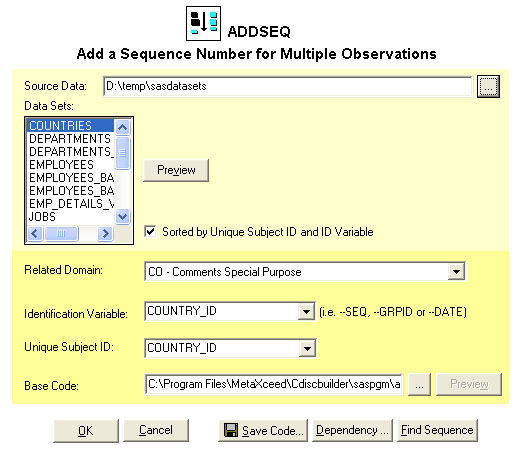|
Overview
Datasets that contain more than one observation per subject requires a
variable to that documents the sequence number. The name of this
sequence variable is usually the name of the CDISC domain name followed by
SEQ. For example, adverse event would have an AESEQ variable.
The values of the sequence number are commonly integers which increment by
one for each observation. The ADDSEQ facility within CDISC builder
will automatically create this sequence variable based on the selected
related domain and other related variables. This can be access by
selecting ADDSEQ from the main CDISC Builder screen.
ADDSEQ Options
The ADDSEQ screen allows you to select all the options before applying
the sequence number to the selected data.

The options available for ADDSEQ
include the following:
- Source Data - This is the
location of the dataset that is going to have the sequence number added
or updated.
- Data Set - The selected dataset
that is going to be updated.
- Related Domain - The CDISC
domain which this data is associated with.
- Identification Variable - A
unique identifier that distinguishes the observation that is repeated
for each subject within the dataset.
- Unique Subject ID - A variable
related to the subject ID.
- Base Code - The path and name
of the BASE SAS program that is going to be created to perform the
ADDSEQ.
- Save Code - The code saved in
this location will contain a macro call capturing all the options that
has been selected. This can therefore be executed independent from
this interface as a SAS program.
- Find Sequence - This will
generate a report of other datasets that has more than one observation
per subject which would therefore require a sequence variable.
 |
Only one dataset
can be selected at a time to have ADDSEQ applied. This is due to
the fact that the identifying variable usually is different among each
dataset and therefore has to be selected individually. |
|